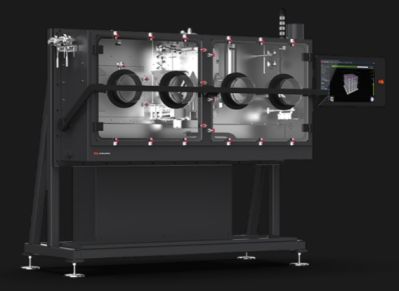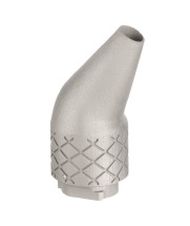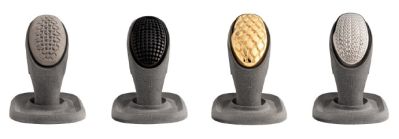Desktop Metal Qualifies 316L Stainless Steel -- Shops Can Now 3D Print Corrosion and Temp Resistant Metal Parts at Scale
Desktop Metal has qualified the use of 316L stainless steel for the Production System™ platform, which leverages patent pending Single Pass Jetting™ (SPJ) technology designed to achieve the fastest build speeds in the metal additive manufacturing market.
VIDEO: 3D Printing with 316L Stainless Steel
Known for its corrosion resistance and excellent mechanical properties at extreme temperatures, 316L stainless steel is well suited for applications in the most demanding conditions, such as parts exposed to marine or pharmaceutical processing environments, food preparation equipment, medical devices and surgical tooling. It also exhibits excellent weldability by standard fusion and resistance methods.

"The qualification of 316L stainless steel with leading mechanical properties on the Production System platform is part of our aggressive roadmap to support an array of materials for binder jetting and a testament to the advantages of SPJ technology, which enables mass production throughput without sacrificing part performance and repeatability," said Jonah Myerberg, co-founder and CTO of Desktop Metal. "With 316L on the Production System P-50, businesses will now be able to leverage additive manufacturing to produce complex, end-use parts suitable for use in harsh environments at volumes and costs competitive with conventional manufacturing."
316L Stainless Steel -- Key Applications
Through extensive testing, the Desktop Metal materials science team has validated that 316L stainless steel printed on Production System technology and sintered by Desktop Metal meets MPIF 35 standards for structural powder metallurgy parts set by the Metal Powder Industries Federation. Parts printed with 316L have demonstrated excellent mechanical properties and corrosion resistance, while significantly decreasing production time and part cost.
Customized Surgical Tool for Medical Applications
Because 316L is a surgical-grade steel, it is an ideal material for medical applications like surgical nozzles. By eliminating tooling, additive manufacturing enables mass production runs of different sized nozzles with no lead time, featuring internal channels that are optimized for individual patient needs.

Printing on the Production System P-50 eliminates multiple fixturing steps otherwise required for machining, and results in a throughput of more than 24,000 parts per week at approximately $2.50 per part. By comparison, machining the same part would cost $20.00 -- $40.00 per part, and require up to two months to create the same number of parts the P-50 can produce in just one week.
Gear Shift Knob for the Automotive Industry
High touch parts like a gear knob require materials that are easy to sanitize. 316L is an optimal material choice because it offers excellent corrosion resistance and cleans easily. A textured gear shift is an example of mass customization made possible by binder jetting on the Production System, which supports up to 200 parts per build and up to 6,700 parts per week. By comparison, casting would require 8 to 14 weeks lead time for tooling, just to begin volume production.

"As innovators in the automotive, medical, consumer products and petrochemical industries continue to embrace the benefits of additive manufacturing, implementing applications made possible with 316L stainless steel, we will begin to see even more widespread adoption of binder jetting technology," said Myerberg. "Materials that push the boundaries of what AM technology can do will continue to advance the industry and drive unparalleled throughput while significantly reducing cost and waste."
The Production System -- the World's Fastest Way to 3D Print Metal Parts At- Scale
Created by the inventors of binder jetting and single-pass inkjet technology, the Production System is an industrial manufacturing platform powered by Desktop Metal's SPJ technology. It is designed to achieve speeds up to 100 times those of legacy powder bed fusion additive manufacturing technologies and enable production quantities of up to millions of parts per year at costs competitive with conventional mass production techniques.
The Production System platform consists of two printer models: the P-1, a solution for process development and serial production applications, and the P-50, a large form factor mass production solution for end-use parts, scheduled to begin commercial shipments in 2021. The Production System combines Desktop Metal engineered binders with an open material platform, allowing customers to produce high performance parts using the same low-cost metal powders used in the Metal Injection Molding (MIM) industry.
An inert processing environment enables compatibility with a variety of materials, including the now qualified 316L stainless steel as well as high-performance alloys and even reactive metals, such as aluminum and titanium.
Want more information? Click below.
Rate this article
View our terms of use and privacy policy